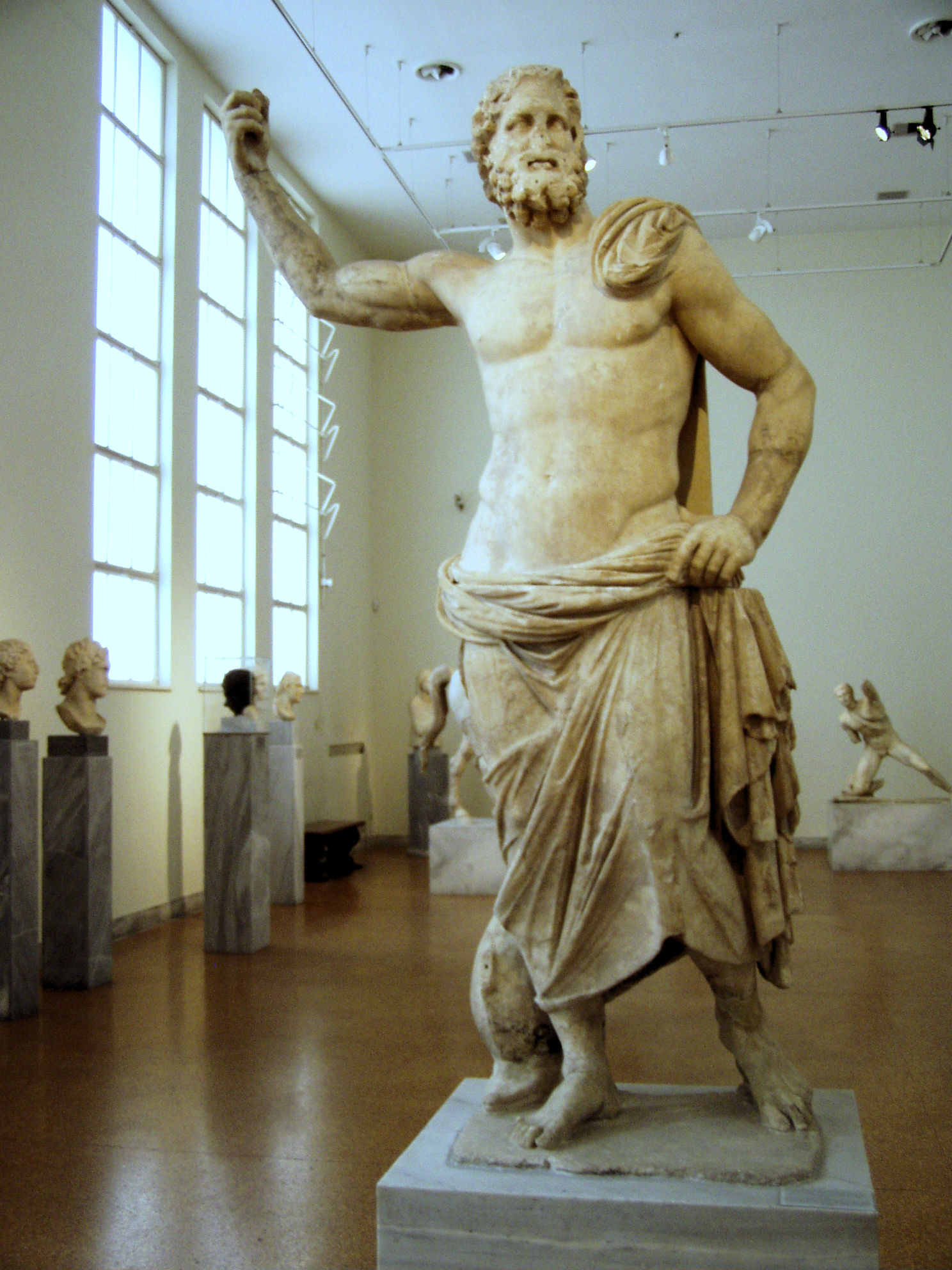Poseidon of Melos on:
[Wikipedia]
[Google]
[Amazon]
 The Poseidon of Melos is a statue of
The Poseidon of Melos is a statue of
Poseidon
Poseidon (; grc-gre, Ποσειδῶν) was one of the Twelve Olympians in ancient Greek religion and myth, god of the sea, storms, earthquakes and horses.Burkert 1985pp. 136–139 In pre-Olympian Bronze Age Greece, he was venerated as a ...
in the National Archaeological Museum, Athens
The National Archaeological Museum ( el, Εθνικό Αρχαιολογικό Μουσείο) in Athens houses some of the most important artifacts from a variety of archaeological locations around Greece from prehistory to late antiquity. It i ...
(NAMA), with the inventory number 235, which is dated to the last quarter of the second century BC. It is believed to be dated back to the Hellenistic Period.
The statue was found in 1877 on the island of Melos. It is made of Parian marble
Parian marble is a fine-grained semi translucent pure-white and entirely flawless marble quarried during the classical era on the Greek island of Paros in the Aegean Sea.
It was highly prized by ancient Greeks for making sculptures. Some of the ...
and has a height of 2.35 metres, which makes it more than lifesize. The statue was found in several pieces, which have been reattached to one another. Portions of the left foot and of the himation are modern recreations. Parts of the nose, beard and hair are missing.
The sea god is depicted naked to the waist in an awe-inspiring pose, with his muscular right arm raised, probably in order to hold a trident
A trident is a three- pronged spear. It is used for spear fishing and historically as a polearm.
The trident is the weapon of Poseidon, or Neptune, the God of the Sea in classical mythology. The trident may occasionally be held by other mari ...
(now lost). His himation hangs around his hips, covering his legs and genitals; he holds it in place at his side with his left hand. His back is also partially covered; a bit of cloth lies, mysteriously suspended, on his left shoulder. His weight rests on his right leg, his left leg is left free. The musculature of his arms and his body generally are very finely worked. The head is slightly tilted to the left and his gaze is directed into the distance. There is a dolphin behind the statue to the right, which serves as an additional support for the weight of the statue. The pose is a standard one for Poseidon, Zeus
Zeus or , , ; grc, Δῐός, ''Diós'', label= genitive Boeotian Aeolic and Laconian grc-dor, Δεύς, Deús ; grc, Δέος, ''Déos'', label= genitive el, Δίας, ''Días'' () is the sky and thunder god in ancient Greek reli ...
and Hades.
Bibliography
* Nikolaos Kaltsas: '' Sculpture in the National Archaeological Museum, Athens'', The J. Paul Getty Museum, Los Angeles 2002 , p. 290 {{National Archaeological Museum of Athens Archaeological discoveries in Greece National Archaeological Museum, Athens 2nd-century BC sculptures Marble sculptures in Greece Sculptures in Athens 1877 archaeological discoveries Sculptures of Poseidon Milos